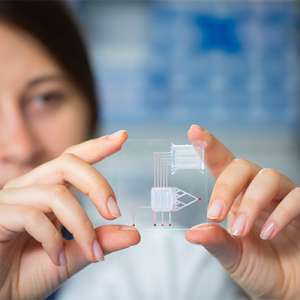In-Vetro Fertilization
Pre-Implantation Genetic Testing
 Are you overwhelmed by all of the things you need to do to get pregnant or pursue your baby? Does even the name of this page sound impossible to understand? No need to worry. We will help you every step of the way.
Are you overwhelmed by all of the things you need to do to get pregnant or pursue your baby? Does even the name of this page sound impossible to understand? No need to worry. We will help you every step of the way.
Traditionally, embryos produced by IVF are assessed microscopically to predict their quality, viability and subsequent ability to produce a pregnancy by their overall appearance. Emerging technology is teaching us that sometimes the tiniest thing (a single living cell) can have the greatest impact on your POSITIVE pregnancy outcome. Pre-implantation testing is a technique in which multiple cells are extracted from an embryo, created through In Vitro Fertilization and used to evaluate the genetic material of the embryo as a whole. Cells removed from each developing embryo are used for genetic analysis to determine if the embryo is affected by genetic defects which would impact implantation, miscarriage and cause subsequent birth defects.
What are preimplantation genetic (PTG-A, PGT-M and PGT-RS)?
Human beings have their genetic information stored inside cells in structures called chromosomes. There are 23 different chromosomes and they exist in pairs, 1 from the biological mother and 1 from the biological father, for a total of 46 chromosomes in each cell. The chromosomes contain instructions for making the proteins that each cell needs to survive. If some of these instructions are missing or are duplicated, the cell cannot function properly. A cell with more than 46 chromosomes or less than 46 chromosomes is called aneuploid and is unhealthy. Sometimes, despite having too many or too few chromosomes, cells can continue to survive and can create embryos that also have this abnormality. Aneuploidy is the leading cause of miscarriage and IVF cycle failure.
At PREG we offer the latest and most advanced genetic tests to detect aneuploidy embryos. These tests aim to identify which of your embryos have genetic defects. This helps us prevent the transfer of embryos which have successfully developed to the blastocyst stage in culture but have a genetic defect that would prevent them from creating a healthy pregnancy. These tests are referred to as pre-implantation genetic testing (PGT-A).
How is the Biopsy Performed for PGT?
In order to detect genetic defects, a small sample of the embryo must be biopsied and sent to a genetics lab. This sample contains cells and their chromosomes for the genetics lab to analyze. We biopsy embryos that have developed to the blastocyst stage on days 5 and 6 after your retrieval. Cells that are removed and sent to the genetics lab come from the trophectoderm layer of the blastocyst. After a small group of cells are removed from the blastocyst, we cryopreserve the embryo. This stops the embryo’s development indefinitely and allows time for the genetics lab to receive the cell sample and screen for abnormalities.
At the genetics lab, technologists use a DNA sequencing method called Next Generation Sequencing to compare the sample from each embryo to a standard they know is normal. When they are finished, they send a report back to us indicating which embryos have the correct number of chromosomes (46) and which embryos do not. As part of this testing, the 23rd pair of chromosomes is analyzed. This pair determines the sex of the embryo so the report also indicates if the embryo will develop into a male or female.
Once we’ve received a report, we’ll know which of the cryopreserved embryos are genetically normal. These normal embryos can be thawed and transferred as part of a frozen embryo transfer cycle. Pregnancy rates are generally higher when transferring embryos that have been screened for genetic abnormalities as we know the embryo for transfer does not have any large genetic defects.
What is the difference between PGT-A and PGT-M?
Preimplantation genetic PTG-A is a test that looks for large genetic abnormalities. These abnormalities are common in embryos and their occurrence increases as the biological mother ages. PGT-A can only detect when large pieces of chromosomes or entire chromosomes are missing or duplicated.
PGT-M is a more detailed test that looks for a very specific genetic abnormality. In order to perform this test, the genetics lab needs to know which disease they are looking for. This is generally indicated by a patient’s carrier screening tests or when they have a child that has a disease caused by a specific genetic defect. When the genetic abnormality is known, the genetic material of the embryo can be analyzed to see if that embryo could result in the birth of a child with a disease. It is not feasible to screen every embryo for every disease causing mutation so PGT-M is not performed routinely, only when it is highly likely to improve a patient’s chances of having a healthy baby.


